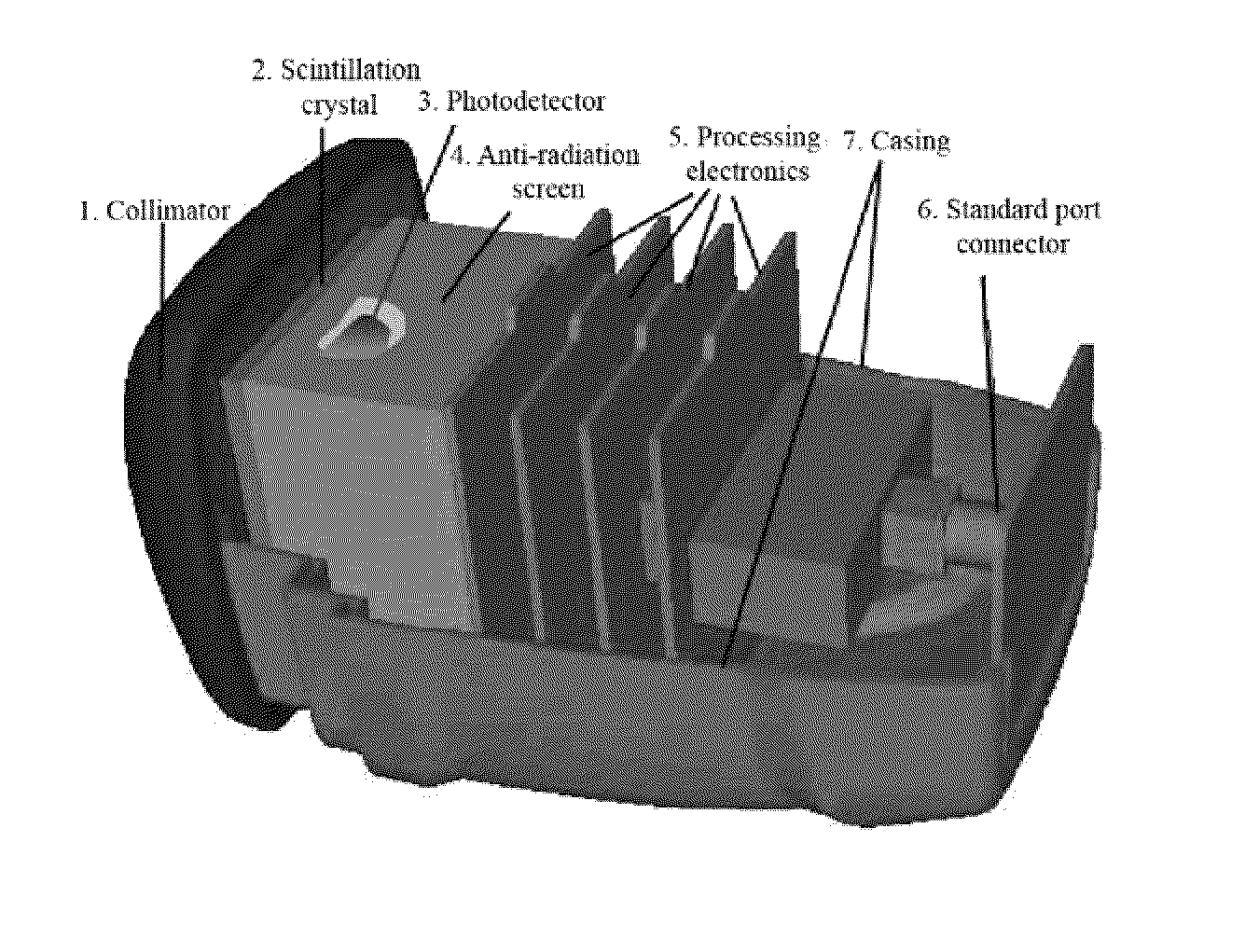Stand-alone mini gamma camera including a localization system for intrasurgical use
a technology of localization system and gamma camera, which is applied in the field of medical nuclear physics and radioguided surgery, can solve the problems of no mini gamma camera that can be plugged in and unplugged, and no mini gamma camera that can solve the serious edge and compression problems affecting the image,
- Summary
- Abstract
- Description
- Claims
- Application Information
AI Technical Summary
Benefits of technology
Problems solved by technology
Method used
Image
Examples
example 1
Embodiment of a Compact Stand-Alone Mini Gamma Camera with Localisation System for Intra-Surgical Use
[0144]The mini gamma camera that is shown (FIGS. 3 and 4) consists only of the sensor head, a USB cable and a standard computer. It has an irregular, ergonomic, rectangular prismatic shape with the following dimensions: 70 mm high, 90 mm wide and 140 mm long. It weighs just under 1 kg, including the collimator. The system's small dimensions, ergonomic shape and light weight make this a portable, hand-held device. This mini gamma camera is used to view small organs such as the sentinel lymph node in an intra-operative situation with a positional resolution of less than 2 mm.
[0145]This portable mini gamma camera can “see” an energy range from 15 keV to 250 keV, although its design has been optimised for the 50 keV to 200 keV region, in which the most widely used radioactive sources in medical imaging are found (e.g. Tc-99m, which emits 140 KeV gamma rays). This camera has a single posi...
example 2
Use of a Compact Stand-Alone Mini Gamma Camera with Gamma Navigation System for Intra-Surgical Use
[0148]FIGS. 7 and 8 show the mini gamma camera that is the object of the present invention being used with radioactive navigation systems.
[0149]FIGS. 7a and 7b show two images captured by the mini gamma camera, at the moments when a 1251 pointer was positioned above and below one of two cobalt sources that were used as sentinel lymph node phantoms.
[0150]FIGS. 8a, 8b and 8c show three photos of the mini camera gamma and the computer connected thereto, at the three moments when the opaque pointer (lead screen) was a) absent, b) positioned over the right-hand source and c) positioned over the left-hand source, whilst the computer shows the shadow effect left by said pointer on the scintigraphic image, showing how the method can be used to locate “hotspots” such as sentinel lymph nodes.
PUM
 Login to View More
Login to View More Abstract
Description
Claims
Application Information
 Login to View More
Login to View More - R&D
- Intellectual Property
- Life Sciences
- Materials
- Tech Scout
- Unparalleled Data Quality
- Higher Quality Content
- 60% Fewer Hallucinations
Browse by: Latest US Patents, China's latest patents, Technical Efficacy Thesaurus, Application Domain, Technology Topic, Popular Technical Reports.
© 2025 PatSnap. All rights reserved.Legal|Privacy policy|Modern Slavery Act Transparency Statement|Sitemap|About US| Contact US: help@patsnap.com



